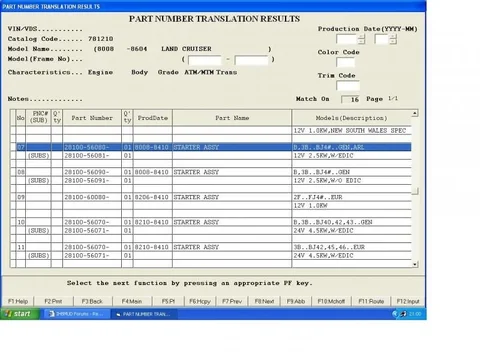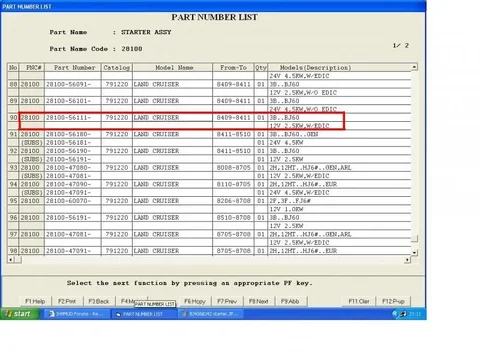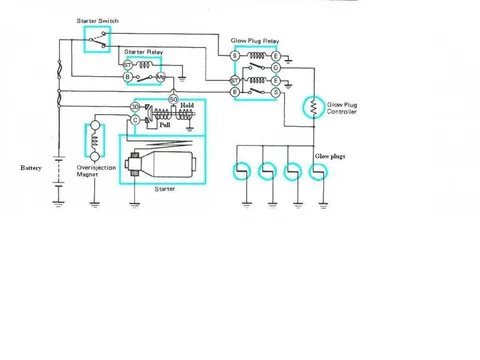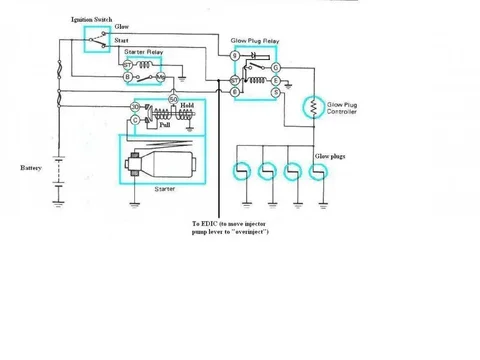I'll drop it and re-check. I guess I'm also wondering if the previous owner in central america used a newer starter as a quick fix....
I can't see such a fix as being either "quick" or "cheap" because we would all be doing the same thing if that were so. (Hence I still think you are likely to have an original starter-nose that is the same as mine.) - But in saying this, I am of course assuming that the rest of your vehicle is "BJ40/BJ42".
.....Do you know what the dimensions should be for the gear on the nose of the starter? ...
Sorry. No I don't. But Gizmo's photos in that link above show what our "noses" should look like. And using "callipers", I think you should be able to compare the dimensions of your original nose with those of your remanufactured one.
If both of my starters have the same dimensions, I would know if the old unit is also the wrong unit....
Yes. And if you find they've managed to fit a BJ60 starter to your BJ40, then perhaps you have other BJ60 parts there like a BJ60 bellhousing?????
...How did you make out with the traffic court?
I was told that if I pleaded guilty, I would be "discharged without conviction". But instead I "stuffed up their cosy system" by pleading "not guilty" and got the enjoyment of "crossexamining the two officers in the witness stand" and having a big rant from the stand myself. (But of course the audience was just made up of "other police officers" and "low-life crims" (like myself) so exposing their behaviour only caused the police embarrassment in front of the 2 "Justices of the Peace"/magistrates.
So inevitably I was convicted and fined. (How could the court take the side of a "bus driver" against "2 sworn officers"?) But the minimal fine ($150) shows IMO that the Justices weren't impressed by the police action. And I'm told the officers approached their union (alleging harrassment) in response to their superiors making them file multiple reports on the incident (prior to going to Court).
(I laid an official complaint with the "NZ Police Complaints Authority".)
It was "all good fun" really because I love "experiencing real life".
Oh - I lost my lawyer the night before I was due in Court too. My employer (the bus company) was going to pay his bill - but only if I was "discharged without conviction". Hence he pressured me to plead guilty whereupon a "no-conviction outcome" would be pre-arranged with the court/police. However I refused to play ball (on principle) and was prepared to pay his bill myself. - But he made that impossible for me by refusing to put a cap on how much I would be liable to pay and refusing to heed my requests (such as my request NOT to have 2 witnesses/bus-passengers sacrifice a day's pay each in order to testify in my support).
I've got to be careful what I say here because I guess I could end up being charged with "contempt of court" if I were to be too open. (Let's just say that "the justice system" has many embedded safeguards to ensure it survives.)
PS. - I am really being genuine when I say I enjoyed this experience. And I am not naiive enough to pretend that I could design a better "system of justice". What really get's to me is when people express "blind-confidence" in the police or justice-system. It should be obvious to everyone that you have
good/bad and
competent/incompetent people in
EVERY profession. While people (in general) seem to readily accept this with "motor mechanics" (for example), they are much less likely to do so with doctors, police officers, magistrates, and the like. But so long as systems are in place to
try to ensure things work the correct way for most of the time then I'm happy. And here in NZ is as good as anywhere for that I reckon. (I was happy with the way the situation was handled by the Police Complaints Authority and I am confident they will be keeping a close eye on one of those officers. Telling a non-truth under oath in Court may be undetectable/unclear to a JP/magistrate but doing the same to a superior officer who is already in possession of lots of time-sequenced-evidence can be devastating to one's career path.)
Sh#t. See what what you've done Albert. - I was trying to avoid blerting out all this here. But thanks anyway - I now feel like I've had a "massive and very satisfying bowel movement".






